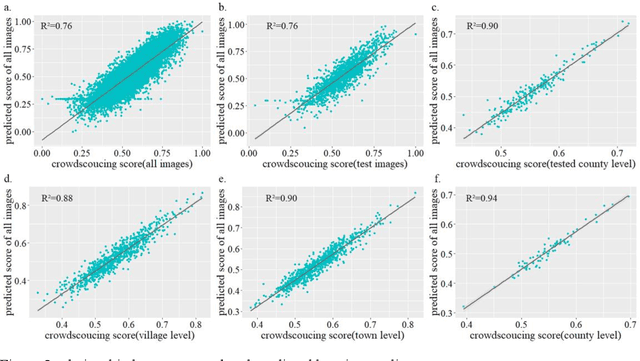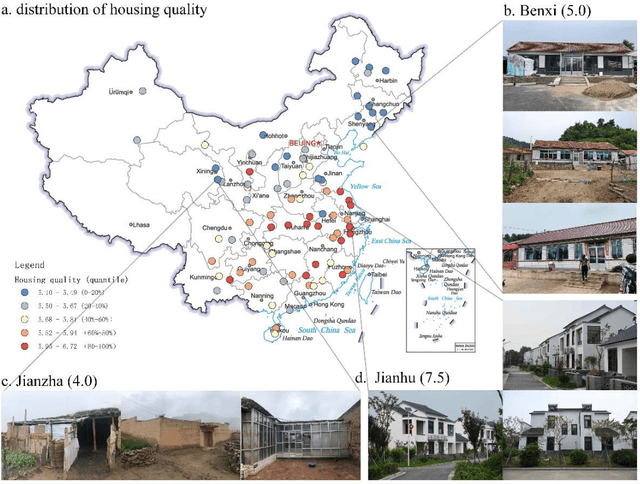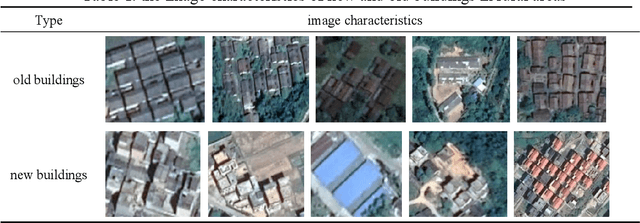Xun Li
Interpreting core forms of urban morphology linked to urban functions with explainable graph neural network
Feb 22, 2025Abstract:Understanding the high-order relationship between urban form and function is essential for modeling the underlying mechanisms of sustainable urban systems. Nevertheless, it is challenging to establish an accurate data representation for complex urban forms that are readily explicable in human terms. This study proposed the concept of core urban morphology representation and developed an explainable deep learning framework for explicably symbolizing complex urban forms into the novel representation, which we call CoMo. By interpretating the well-trained deep learning model with a stable weighted F1-score of 89.14%, CoMo presents a promising approach for revealing links between urban function and urban form in terms of core urban morphology representation. Using Boston as a study area, we analyzed the core urban forms at the individual-building, block, and neighborhood level that are important to corresponding urban functions. The residential core forms follow a gradual morphological pattern along the urban spine, which is consistent with a center-urban-suburban transition. Furthermore, we prove that urban morphology directly affects land use efficiency, which has a significantly strong correlation with the location (R2=0.721, p<0.001). Overall, CoMo can explicably symbolize urban forms, provide evidence for the classic urban location theory, and offer mechanistic insights for digital twins.
Facial Expression Recognition with Controlled Privacy Preservation and Feature Compensation
Dec 03, 2024Abstract:Facial expression recognition (FER) systems raise significant privacy concerns due to the potential exposure of sensitive identity information. This paper presents a study on removing identity information while preserving FER capabilities. Drawing on the observation that low-frequency components predominantly contain identity information and high-frequency components capture expression, we propose a novel two-stream framework that applies privacy enhancement to each component separately. We introduce a controlled privacy enhancement mechanism to optimize performance and a feature compensator to enhance task-relevant features without compromising privacy. Furthermore, we propose a novel privacy-utility trade-off, providing a quantifiable measure of privacy preservation efficacy in closed-set FER tasks. Extensive experiments on the benchmark CREMA-D dataset demonstrate that our framework achieves 78.84% recognition accuracy with a privacy (facial identity) leakage ratio of only 2.01%, highlighting its potential for secure and reliable video-based FER applications.
Discrete-Time Mean-Variance Strategy Based on Reinforcement Learning
Dec 24, 2023Abstract:This paper studies a discrete-time mean-variance model based on reinforcement learning. Compared with its continuous-time counterpart in \cite{zhou2020mv}, the discrete-time model makes more general assumptions about the asset's return distribution. Using entropy to measure the cost of exploration, we derive the optimal investment strategy, whose density function is also Gaussian type. Additionally, we design the corresponding reinforcement learning algorithm. Both simulation experiments and empirical analysis indicate that our discrete-time model exhibits better applicability when analyzing real-world data than the continuous-time model.
Combining deep learning and crowdsourcing geo-images to predict housing quality in rural China
Aug 15, 2022



Abstract:Housing quality is an essential proxy for regional wealth, security and health. Understanding the distribution of housing quality is crucial for unveiling rural development status and providing political proposals. However,present rural house quality data highly depends on a top-down, time-consuming survey at the national or provincial level but fails to unpack the housing quality at the village level. To fill the gap between accurately depicting rural housing quality conditions and deficient data,we collect massive rural images and invite users to assess their housing quality at scale. Furthermore, a deep learning framework is proposed to automatically and efficiently predict housing quality based on crowd-sourcing rural images.
A Histogram Thresholding Improvement to Mask R-CNN for Scalable Segmentation of New and Old Rural Buildings
Feb 08, 2021



Abstract:Mapping new and old buildings are of great significance for understanding socio-economic development in rural areas. In recent years, deep neural networks have achieved remarkable building segmentation results in high-resolution remote sensing images. However, the scarce training data and the varying geographical environments have posed challenges for scalable building segmentation. This study proposes a novel framework based on Mask R-CNN, named HTMask R-CNN, to extract new and old rural buildings even when the label is scarce. The framework adopts the result of single-object instance segmentation from the orthodox Mask R-CNN. Further, it classifies the rural buildings into new and old ones based on a dynamic grayscale threshold inferred from the result of a two-object instance segmentation task where training data is scarce. We found that the framework can extract more buildings and achieve a much higher mean Average Precision (mAP) than the orthodox Mask R-CNN model. We tested the novel framework's performance with increasing training data and found that it converged even when the training samples were limited. This framework's main contribution is to allow scalable segmentation by using significantly fewer training samples than traditional machine learning practices. That makes mapping China's new and old rural buildings viable.
 Add to Chrome
Add to Chrome Add to Firefox
Add to Firefox Add to Edge
Add to Edge